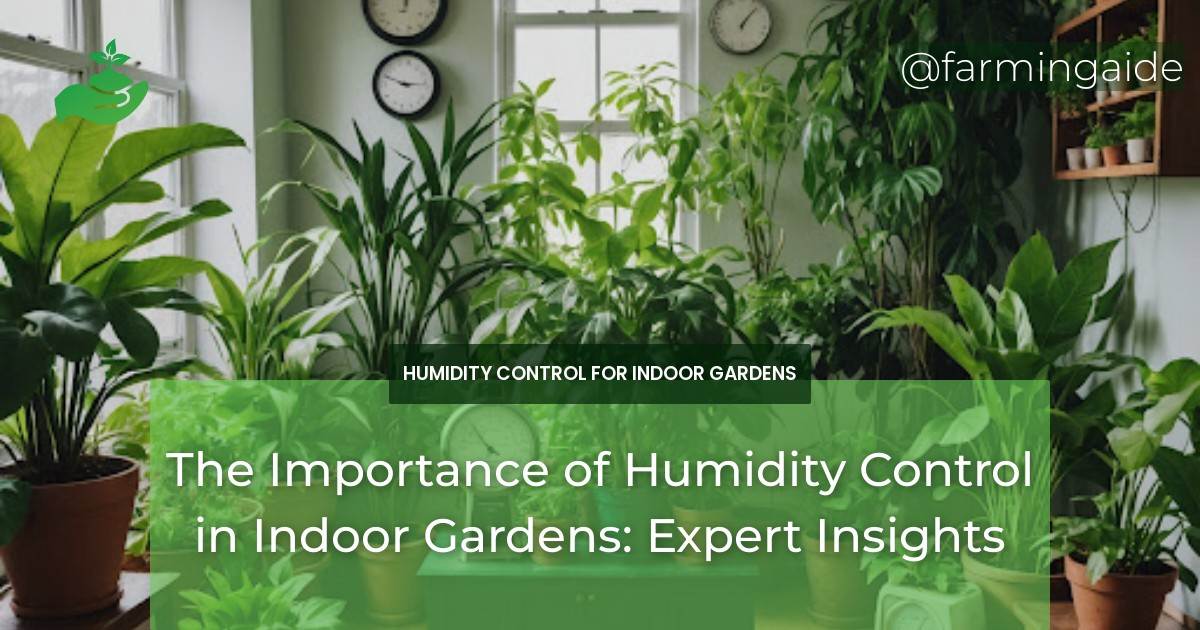When it comes to creating a thriving indoor garden, many factors come into play. One crucial element that is often overlooked is humidity control. Indoor gardening experts agree that maintaining optimal humidity levels is essential for plant health, growth, and survival. In this article, we’ll delve into the importance of humidity control in indoor gardens, exploring the ideal humidity levels for different plants, the impact of high and low humidity, and effective techniques for controlling humidity. Whether you’re a seasoned gardener or just starting out, understanding humidity control is vital for achieving success in your indoor garden.
Key Takeaways
- Maintaining optimal humidity levels is crucial for plant health and growth in indoor gardens.
- Ideal humidity levels vary depending on the type of plant, with most plants thriving between 40-60% relative humidity.
- High humidity can lead to root rot and fungal diseases, while low humidity can cause leaf curl and plant stress.
- Techniques for controlling humidity include using humidifiers and dehumidifiers, as well as natural methods like grouping plants and using pebble trays.
- Regular monitoring and adjustments are necessary to ensure optimal humidity levels and prevent humidity-related challenges.
Understanding Humidity in Indoor Gardening
Humidity refers to the amount of moisture in the air. In indoor gardens, humidity control is critical because it affects plant growth, health, and susceptibility to disease. Most plants thrive in a humid environment, but excessive or inadequate humidity can be detrimental.
Definition and Importance of Humidity
Humidity is measured as relative humidity (RH), which is the percentage of water vapor in the air compared to the maximum amount of water vapor the air can hold at a given temperature. In indoor gardens, maintaining optimal humidity levels is crucial for plant health and growth.
Ideal Humidity Levels for Different Plants
Optimal humidity levels vary depending on the type of plant. Most plants thrive in a humid environment, but some plants require higher or lower humidity levels. Here are some general guidelines:
| Plant Type | Ideal Humidity Level |
|---|---|
| Tropical plants (e.g., ferns, peace lilies) | 50-70% RH |
| Herbs (e.g., basil, mint) | 40-50% RH |
| Succulents and cacti | 30-40% RH |
Impact of Humidity on Plant Health
Humidity has a significant impact on plant health, affecting growth, development, and susceptibility to disease.
ALSO READ
Effects of High Humidity
High humidity can lead to:
- Root rot and fungal diseases due to excess moisture
- Leaf spot and blight diseases
- Reduced plant growth and development
Effects of Low Humidity
Low humidity can cause:
- Leaf curl and plant stress
- Reduced plant growth and development
- Increased susceptibility to pests and diseases
Techniques for Controlling Humidity
Fortunately, there are several techniques to control humidity in indoor gardens.
ALSO READ
Use of Humidifiers and Dehumidifiers
Humidifiers add moisture to the air, while dehumidifiers remove excess moisture. These devices can be especially useful in extreme humidity conditions.
Natural Methods for Humidity Control
Natural methods for controlling humidity include:
- Grouping plants to create a microclimate
- Using pebble trays or water-filled saucers to increase evaporation
- Placing plants on a tray with wet pebbles or sand
Monitoring and Adjusting Humidity Levels
Regular monitoring and adjustments are necessary to ensure optimal humidity levels and prevent humidity-related challenges.
Tools for Measuring Humidity
Hygrometers are devices that measure relative humidity. There are different types of hygrometers, including digital, analog, and thermohygrometers.
Regular Adjustments for Optimal Growth
Regularly check humidity levels and adjust as necessary to ensure optimal growth and prevent humidity-related challenges.
Case Studies: Successful Humidity Management
Expert indoor gardeners have developed effective strategies for managing humidity in their gardens.
Examples from Expert Indoor Gardeners
One expert gardener uses a humidifier in the winter months to maintain optimal humidity levels, while another uses a dehumidifier in the summer to prevent excessive moisture.
Lessons Learned from Humidity-Related Challenges
Many gardeners have learned from their experiences with humidity-related challenges, such as:
- Monitoring humidity levels regularly to prevent extreme fluctuations
- Adjusting humidity levels based on the type of plant and climate
Conclusion: Mastering Humidity for Thriving Indoor Gardens
In conclusion, humidity control is a critical aspect of indoor gardening. By understanding the importance of humidity, ideal humidity levels, and techniques for controlling humidity, you can create a thriving indoor garden. Remember to monitor and adjust humidity levels regularly to ensure optimal growth and prevent humidity-related challenges. With the right strategies and techniques, you can master humidity control and enjoy a flourishing indoor garden.


